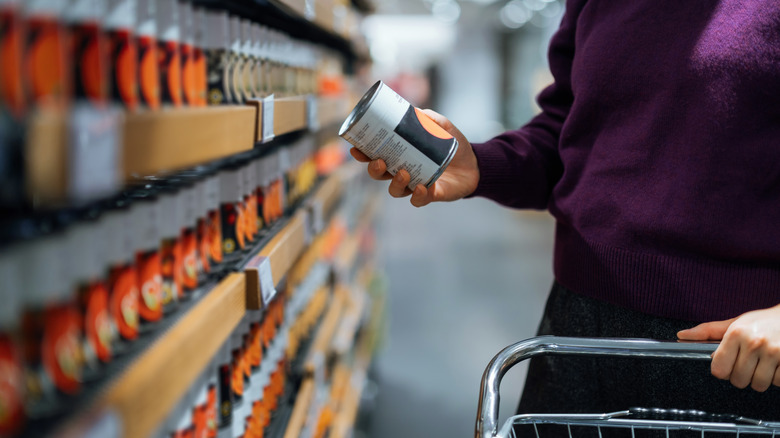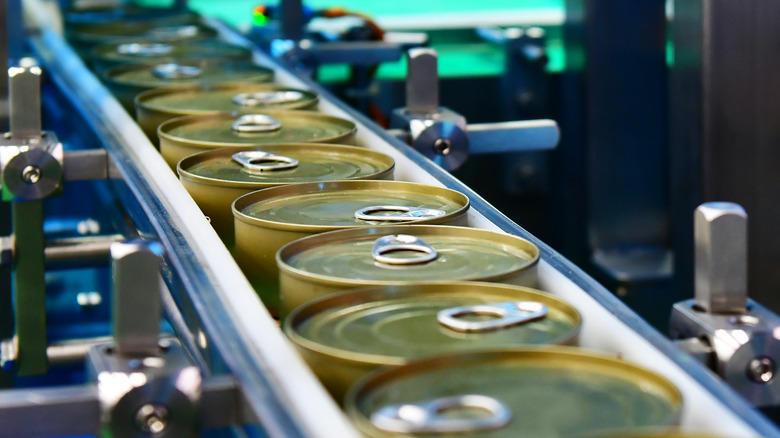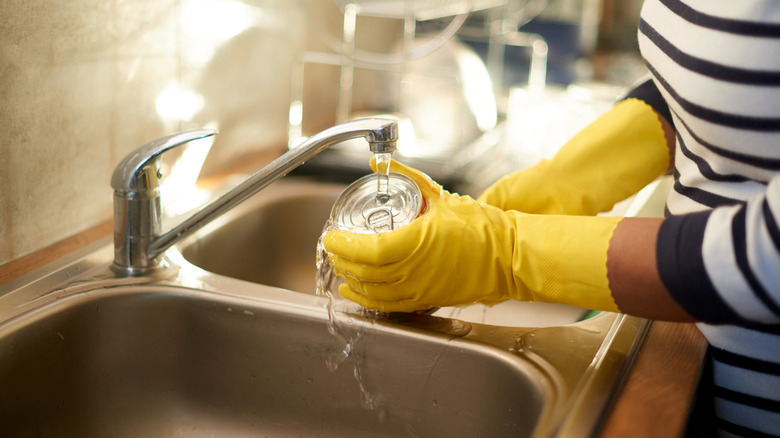The Major Canned Food Safety Step You're Probably Missing
When you're about to whip up a tuna salad sandwich or toast some sweet, canned bread, your go-to move might be grabbing the can opener. But here's the thing: before you even think about cracking that can open, you should be reaching for some soap and water. While we're all taught about food safety basics like washing fruits and vegetables before eating them, washing the can lid is a simple step you really don't want to skip, and many people don't even know about it.
Consider this: Before that can reaches your kitchen, it's been on quite a trek, traveling across states, by plane and by truck, and sitting in warehouses along the way. Dust, grime, and who knows what else could have settled on that lid. Even if the lid doesn't fall into your food when you open it (but it could, ick), just tipping it slightly can let those unwanted particles slip right in. Sounds unappetizing, right? And trust us, that's not even the worst part — can lids may also harbor bacteria and other nasties that you definitely don't want in your food.
The unforeseen dangers that could be lurking on your canned goods
Fair warning: What follows might be a bit gross for some readers. If you'd prefer not to read about it, you can skip ahead to the next section on proper can lid cleaning.
Though it's something we'd all rather not think about, the reality is that canned goods can potentially come into contact with less-than-pleasant elements during their journey to your kitchen. For example, it's possible that cans may be exposed to rodents like mice or rats while stored in warehouses. These animals can urinate on the lids (though rare), leaving behind a potential source of disease. But that's not the only concern. Dust, which settles on cans during transport and storage, may carry bacteria. If consumed, it could potentially cause stomach upset.
And then there are the bugs. Cockroaches, for example, are known to crawl over surfaces and can leave behind eggs or droppings. Can lids could also have tiny traces of insects like flies, which are notorious for spreading disease. Even if the lid appears clean, microscopic remnants can be enough to contaminate your food. But don't worry — protecting yourself is simple! By taking just a moment to thoroughly wash your can lids before opening them, you can easily safeguard your food from these potential contaminants.
Exactly how to clean your can lid to avoid contaminants
To properly clean your can lid and avoid contaminants, start by washing it for 20 seconds using warm water and soap. While washing, take a moment to inspect the can for any potential damage, such as dents or rusting. Proper can storage is also important, so make sure you're avoiding common mistakes when storing canned goods to prevent damage that could lead to contamination. Use a small brush to scrub deep into the crevices, ensuring the lid is completely clean. If you don't have a brush, a sponge will do the trick.
For an even deeper clean, especially if you're dealing with a can that's been stored for a long time, consider soaking the lid in a solution of water mixed with a small amount of vinegar or baking soda. Let the lid soak for 10-15 minutes and then rinse thoroughly under running water to wash away any residue. Once you're done with whichever method you chose, pat the can lid dry. Now, you're all set to proceed with your tuna salad sandwich, your hot dog and beans, or any other recipes requiring canned foods.


